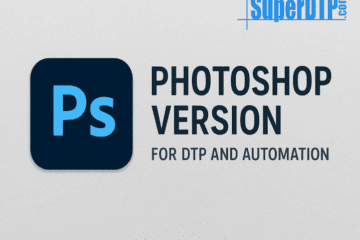In today’s global market, companies often need to publish documents in multiple languages to reach diverse audiences. Whether it’s brochures, manuals, e-learning modules, or packaging materials, simply translating the content isn’t enough. You also need to ensure that the document layout, design, and formatting look just as professional in Arabic or Chinese as they do in English. Multilingual Desktop Publishing (DTP) is essential in this situation.
Multilingual DTP is the process of formatting translated content to match the original layout while considering language-specific nuances. Let’s break down the entire workflow—from the initial translation phase to the final print-ready or digital output.
1. Project Kick-Off and File Analysis
A multilingual DTP (Desktop Publishing) project kick-off involves setting the stage for the successful localization of documents. This entails setting precise objectives, specifying the project’s parameters, and examining the source and destination files.
File Analysis:
Discuss the source files, their format, and any specific requirements for the target languages.
Identify the languages for translation and localization.
Define the final output, including file formats, layouts, and quality standards.
Create a reasonable schedule with due dates and goals.
2. File Preparation for Translation
File preparation for multilingual DTP involves several key steps to ensure smooth translation and layout adjustments for multiple languages. This includes ensuring the source file is clean, text is easily editable, and specific considerations are made for languages with unique formatting requirements
3. Translation and Localization
Both localization and translation serve distinct functions in language and communication, despite their close relationship.
Translation focuses on the linguistic aspect of converting text, ensuring accuracy and clarity in the target language.
The localization process goes beyond translation to make a product or content culturally relevant and appropriate for a specific region or market
This involves:
Adapting visuals and design elements.
Incorporating culturally relevant symbols and imagery.
4. Importing Translated Text Back into Layout
Importing translated text back into a multilingual DTP (Desktop Publishing) project involves re-integrating the translated text into the original design file after it has been translated and potentially localized. This process ensures the translated content fits within the existing layout, respecting design elements and maintaining visual consistency across different languages.
5. Formatting and Style Adjustments
To guarantee correctness and visual appeal across several languages, multilingual desktop publishing (DTP) necessitates close attention to formatting and style modifications. Key considerations include font selection, text expansion and contraction, layout adjustments for right-to-left languages, and maintaining visual consistency
6. Language-Specific QA
Multilingual DTP (Desktop Publishing) involves adapting document layouts for different languages, ensuring the final product is visually appealing and culturally appropriate. Language-specific QA (Quality Assurance) in multilingual DTP ensures the translated text accurately reflects the original content and is correctly formatted for each target language. This includes checking for correct font usage, text expansion, and adherence to layout specifications for each language.
Language-Specific QA in Multilingual DTP
- Linguistic Accuracy:
This involves verifying the accuracy of translations, checking for grammatical errors and incorrect word choices, and ensuring the translated text conveys the intended meaning of the source document.
- Formatting and Layout:
Languages can vary significantly in text length, character sets, and writing direction (left-to-right, right-to-left, etc.). QA needs to ensure the translated text fits within the layout, handles special characters correctly, and respects the visual design.
- Font and Typography:
Not all fonts support all characters. QA needs to ensure that the correct fonts are used for each language and that the typography (font sizes, styles, etc.) is consistent and appropriate for the target language and document type.
7. Technical QA and Compliance Check
Technical QA and compliance checks in multilingual DTP (Desktop Publishing) ensure translated documents are accurate, consistent, and adhere to both technical specifications and cultural norms. This involves verifying the translated content against the source material, checking for formatting errors, and ensuring compliance with industry standards and regulations.
Technical QA and Compliance in Multilingual DTP
Linguistic Accuracy:
Ensuring the translated text is accurate, consistent, and conveys the intended meaning of the source document.
Typographical Accuracy:
Checking for correct font usage, spacing, alignment, and other formatting elements.
Technical Compliance:
Ensuring that the translated document meets all technical requirements, such as page size, margins, headers, and footers.
Regulatory Compliance:
Confirming that the translated document complies with all relevant legal and regulatory standards, which may vary by industry and region.
Benefits of thorough Technical QA and Compliance:
Improved User Experience:
Well-formatted and accurate translations enhance readability and user engagement.
Reduced Errors and Misinterpretations:
Correct translations and appropriate formatting reduce the possibility of mistakes and misunderstandings.
Cost Savings:
Detecting and fixing errors early in the process helps avoid expensive rework down the line.
8. Client Review and Feedback
Client review and feedback are crucial in multilingual DTP to ensure the final product accurately reflects the original content and resonates with the target audience. This involves providing feedback on translation accuracy, design, and layout, ensuring consistency across languages, and maintaining brand identity. Effective communication, clear feedback processes, and timely responses from the DTP provider are essential for a successful project.
9. Final Output and Delivery
The final output of multilingual DTP (Desktop Publishing) involves delivering print-ready or digitally publishable files, accurately formatted and designed for each target language. This includes ensuring text is displayed correctly, page layouts are appropriate for the target cultures, and all design elements are consistent across languages. The process often involves native speaker review and final proofreading to guarantee quality and accuracy.
Final Thoughts
Multilingual DTP isn’t just a support task—it’s a critical part of your global communication strategy. A well-executed DTP process ensures that your translated documents don’t just read well—they look polished, professional, and culturally aligned.
By following a structured workflow, you can manage multilingual projects smoothly from translation to final delivery. Whether you’re publishing technical manuals in 10 languages or designing global marketing campaigns, multilingual DTP ensures your message is visually and linguistically on point.
Super DTP Ltd is a specialized desktop publishing agency located in Gabrovo, Bulgaria, offering book publishing, multilingual DTP, and E-learning localization services to translation agencies and localization companies worldwide! Check our services at www.superdtp.com or contact us at dtp.bulgaria@gmail.com for further details.


